Whether you’re vacationing in Orlando, Florida or you live here, Wekiwa Springs State Park should be on your list of places to visit. This gorgeous spring is one of hundreds throughout the state. However, swimming in the crystal clear water is just one activity you can enjoy. Follow along to learn more about Wekiwa Springs State Park, including the best time to visit, the cost, and the wildlife that calls this state park home.
What is Wekiwa Springs State Park?
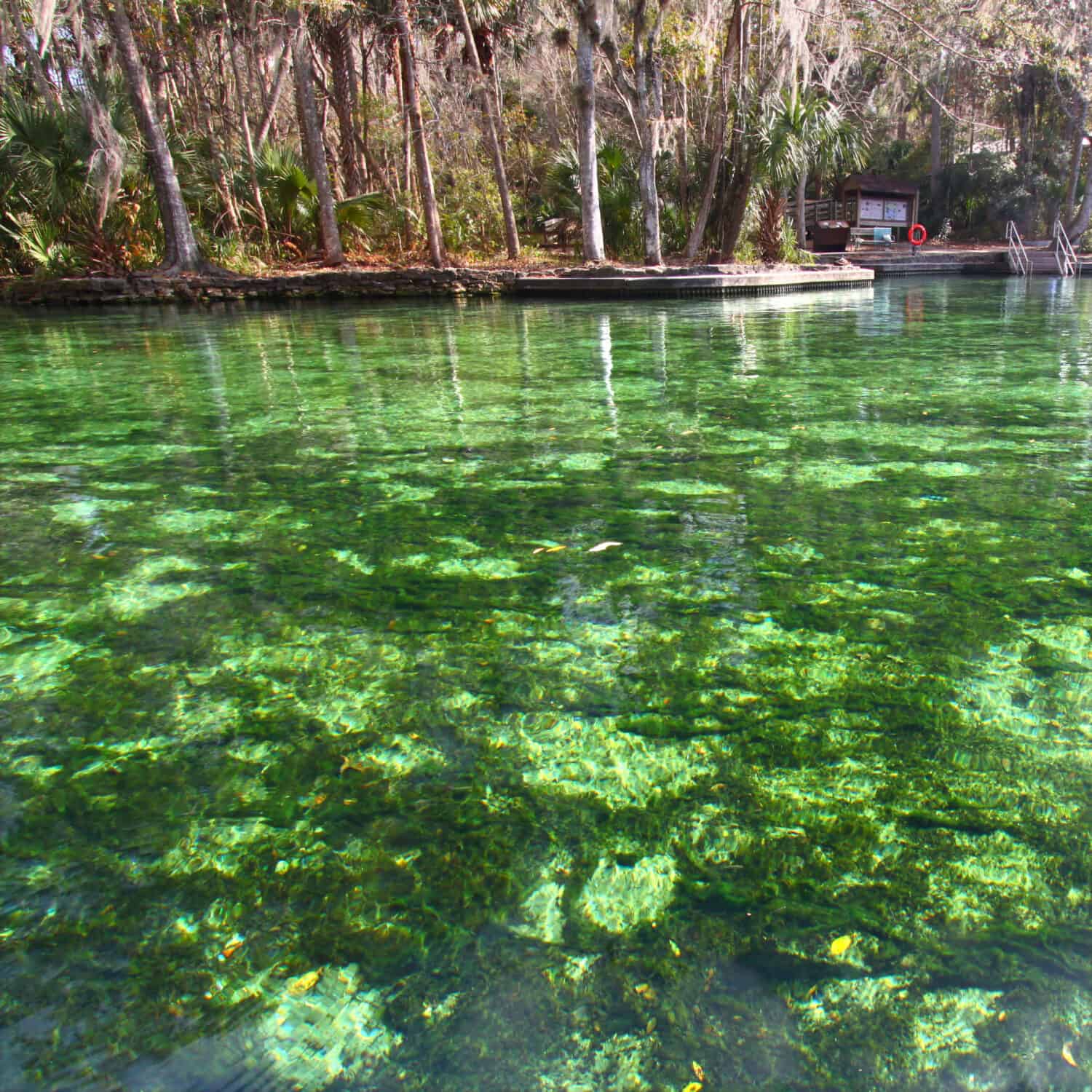
Wekiwa was once called Clay Springs.
©Jason Patrick Ross/Shutterstock.com
Wekiwa Springs State Park is a 7,000-acre park just 20 minutes from Orlando. This gorgeous natural area is a very popular attraction. However, it was once owned by the Apopka Sportsmen’s Club and the Wilson Cypress Company. The co-owner of the Apopka Sportsmen’s Club, who was also the mayor of Apopka, pushed to preserve the land. The Apopka Sportsmen’s Club sold the land to the state of Florida in 1969.
Long before it became a state park though, the area was known as Clay Springs until 1906. The springs have always been popular. As early as 1890, there was a hotel and bathhouse complex at Wekiwa. Both structures are now gone.
Where is Wekiwa Springs State Park?
Wekiwa Springs State Park is in Apopka, Florida. Apopka is part of the Orlando–Kissimmee–Sanford Metropolitan Statistical Area. The population of Apopka is around 54,800 and continues to grow. The surface area of this city is 35.97 square miles. Apopka isn’t just known for Wekiwa, but also the Lake Apopka Wildlife Drive.
About Wekiwa Springs State Park
Now that we know a little more about this state park’s history, we can dive into the cost, activities, wildlife, best time to visit, and how to get there.
Best Time to Visit
The best time to visit Wekiwa Springs State Park depends on what you like to do. For example, if you’d like to swim in the swimming hole, it’s best to visit from May to September. This is when the outside temperature is warm enough to enjoy the refreshing water. Trying to swim in December or January is doable, but so cold! It’s more chilling than refreshing.
However, during the summer, the springs are very crowded, especially near holidays and on weekends. If you want to beat the crowds, visit on a weekday when students are in school. For those who love hiking and kayaking, you may want to wait until after summer. Fall and spring in Apopka are mild. The weather is comfortable enough to stay outside for a few hours, without feeling extreme heat.
How To Get There
Wekiwa Springs State Park is about 20 to 30 minutes away from Orlando. You can get there using the highway or back roads. If you’re flying in, the closest airport is the Orlando Sanford International Airport although you can also book a flight to the Orlando International Airport, which is bigger.
Contact Information
Address: 1800 Wekiwa Circle, Apopka FL 32712
Phone: 407-553-4383
Hours: From 8 a.m. until sundown
Cost
The cost to enter this state park depends on the vehicle or your mode of transportation. For example, it costs $6 per vehicle, with a limit of 8 people per vehicle. However, if you are a single occupant, the entry fee is $4. Pedestrians, cyclists, and additional passengers pay $2. Within the state park, you can also rent kayaks and canoes. The cost for the rentals varies but can be found here. Visitors can also purchase food and snacks like sandwiches, yogurt, chips, candy, marshmallows, and assorted nuts and seeds.
Activities
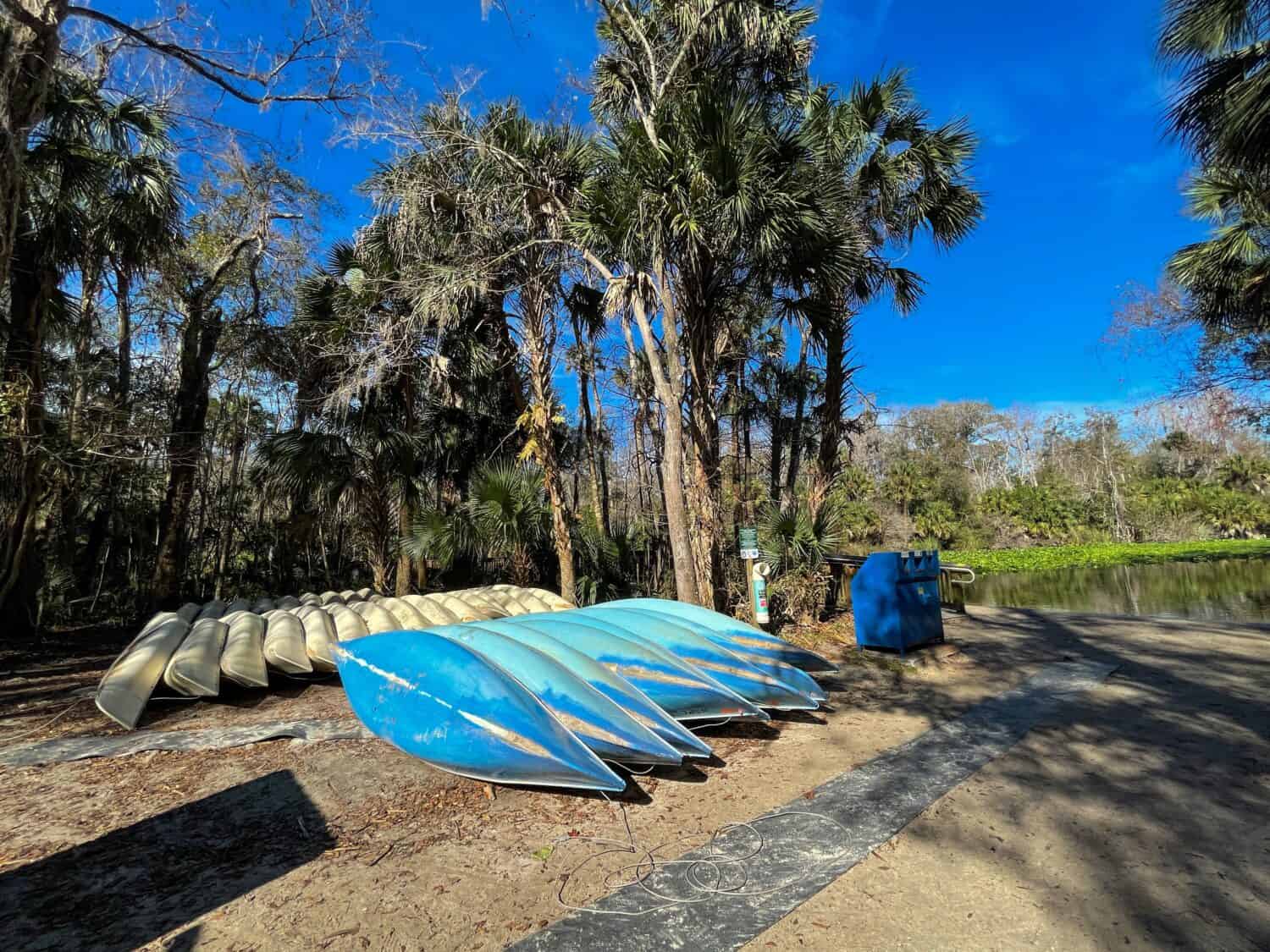
Wekiwa Springs State Park is an excellent area to kayak and canoe.
©Joni Hanebutt/Shutterstock.com
You won’t run out of things to do while visiting Wekiwa Springs. Truthfully, one day isn’t enough to explore this 7,000-acre park. Not only can you swim in the gorgeous crystal clear swimming hole, but also hike, view wildlife, bird watch, bike, camp, picnic, snorkel, horseback ride, kayak, canoe, and more. It’s popular to bike the off-road bicycle trail, which is about 9 miles long. An excellent hiking trail is the Wekiwa Springs Volksmarch Trail. This loop is for 5.8 miles and takes around two hours to complete.
The Wekiwa Springs State Park is part of the Great Florida Birding & Wildlife Trail. You can spot birds like bald eagles, burrowing owls, Florida scrub jays, and roseate spoonbills.
Wildlife in and around Wekiwa Springs State Park
No matter what you’re doing on your trip to Wekiwa Springs State Park, you have a chance of spotting incredible animals, including manatees and alligators! Continue reading to learn about a few animals that call this natural area home.
West Indian Manatee
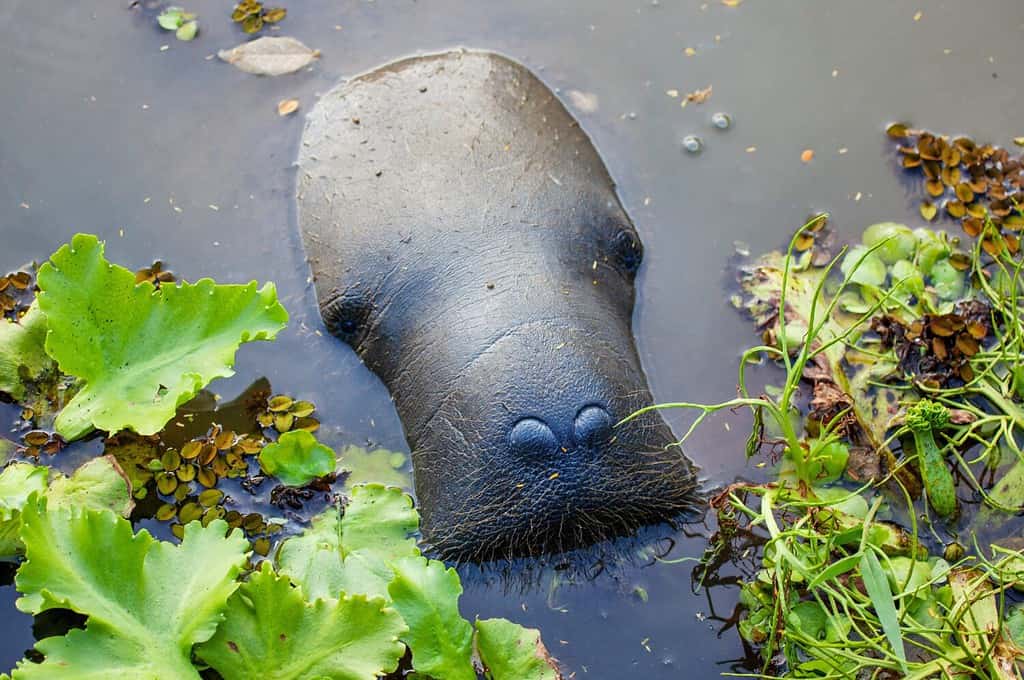
West Indian manatees are common in Wekiwa Springs State Park.
©Victor1153/Shutterstock.com
The first animal on our list is a favorite for many, the West Indian manatee. These gorgeous manatees are common in the water, especially from November through April. While you can see manatees during the summer in Wekiwa, they aren’t as common. West Indian manatees have a wide range. They live along the coasts and in the rivers of the eastern United States, parts of the Caribbean, and through Central and about half of South America. Currently, West Indian manatees are listed as Vulnerable on the IUCN Red List. At one point though, they were endangered.
American Black Bear
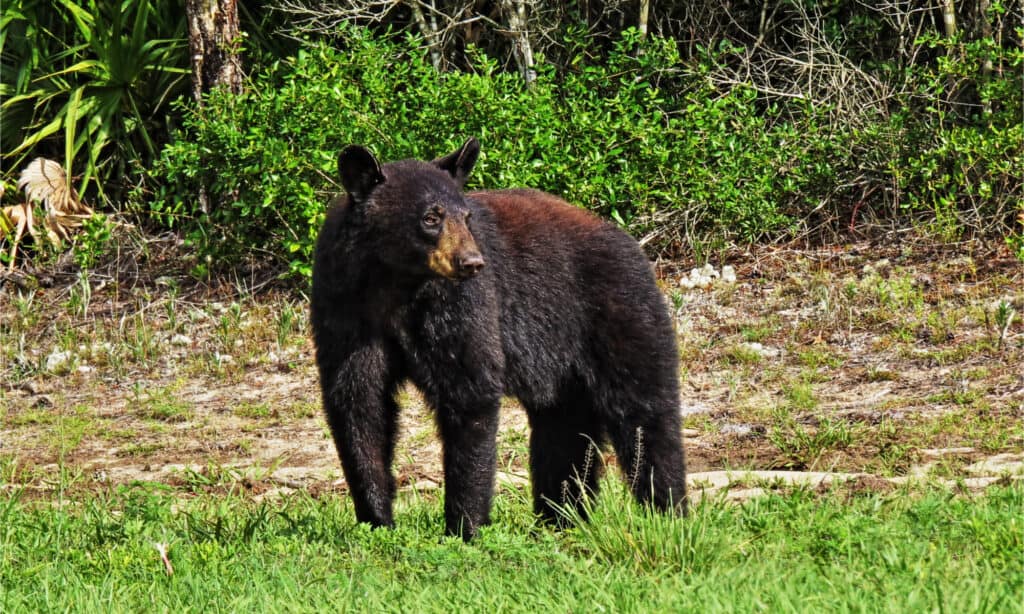
The largest black bear in Florida weighed a whopping 760 pounds.
©Roger Epps/Shutterstock.com
Did you know Florida has black bears? There are about 4,050 black bears in the state. While they live in the Wekiwa area, there is no telling if you’ll see one. Black bears are the only bear species you’ll find in the state. Male black bears are massive, weighing anywhere between 250 to 350 pounds. However, larger black bears have been found. For instance, the largest black bear in Florida weighed 760 pounds.
Bald Eagle
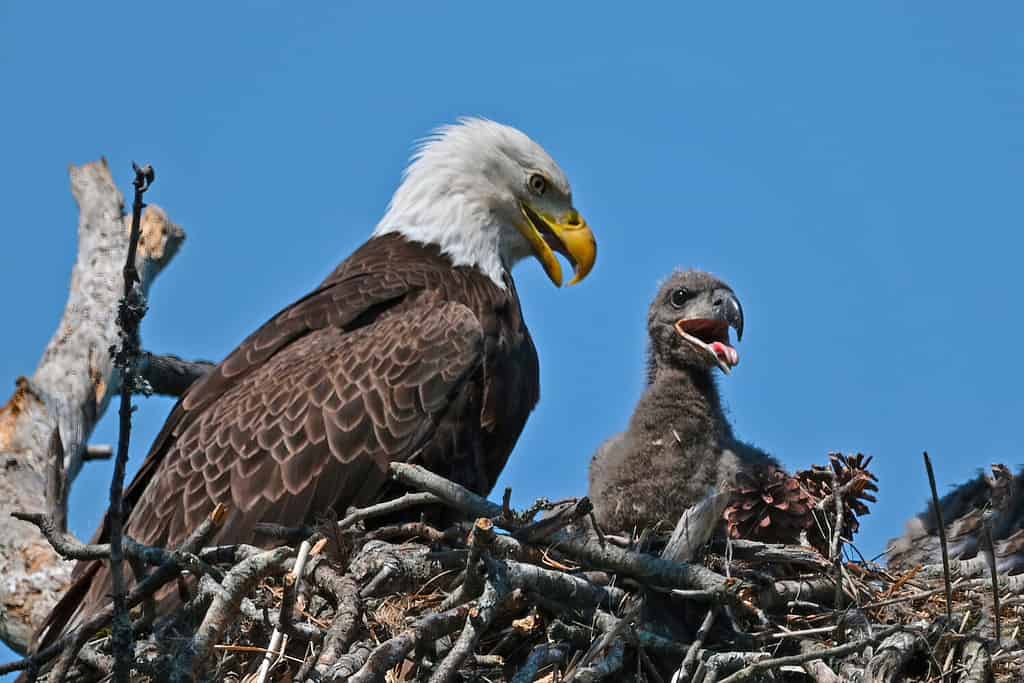
In Florida, there are about 1,500 pairs of bald eagles.
©Brian E Kushner/Shutterstock.com
If you’re going bird watching in Wekiwa Springs State Park, you’re in for a treat, as bald eagles are sometimes seen in the park. They nest in the park. In Florida, experts estimate there are about 1,500 pairs. Bald eagles are incredible birds. They are found throughout the United States. Alaska has the highest concentration of bald eagles in the world. There are about 30,000 pairs in the state. At one point though, bald eagles were close to extinction. In the 1950s, there were only about 1,000 bald eagles. Now though, the United States is home to over 300,000 bald eagles.
Sandhill Crane
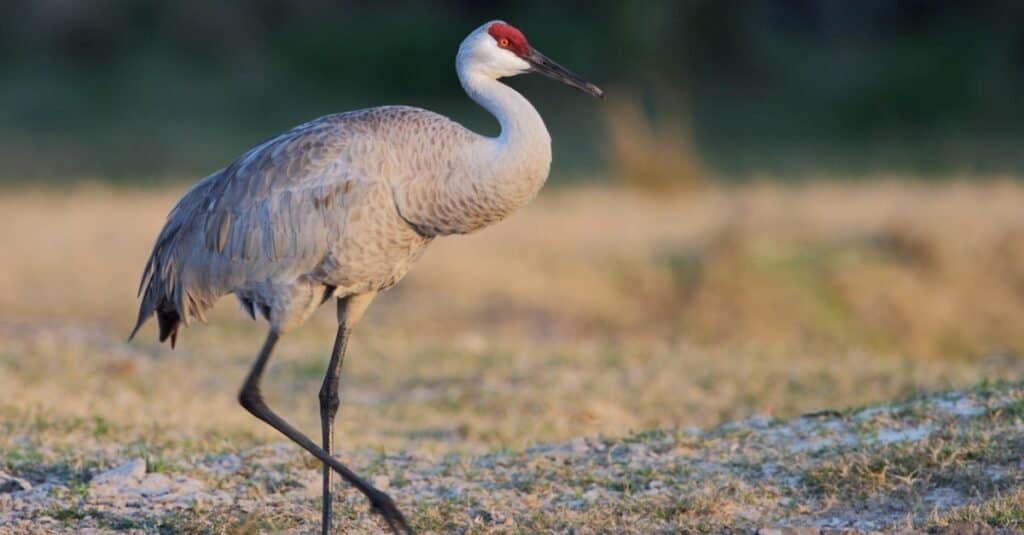
The average male sandhill crane weighs 10.1 pounds.
©iStock.com/WMarissen
Another iconic Florida animal you may see within Wekiwa Springs is the sandhill crane. Sandhill cranes live in North America and extreme northeastern Siberia. They are very common birds in Central Florida, which includes cities like Orlando, Kissimmee, Apopka, and Sanford.
Sandhill cranes are generally grey with red foreheads, white cheeks, and long, dark, pointed bills. They are very tall, reaching anywhere from 2 feet and 7 inches to 4 feet and 6 inches. Male sandhill cranes are slightly larger than females. They can weigh up to 14.8 pounds, but average 10.1 pounds.
American Alligator

Alligators are dangerous and inhabit many southern U.S. waters. There are over 5 million in the United States.
©iStock.com/Cindy Larson
Last but not least is another iconic symbol of Florida, American alligators. American alligators are extremely common in Florida, including major cities like Orlando. Generally, it’s safe to assume that any lake or pond over an inch deep in Florida can contain an alligator. In Florida, experts estimate there are about 1.3 million American alligators. These massive reptiles can reach impressive lengths of up to 15 feet. They may easily weigh over 800 pounds. The heaviest American alligator ever caught in Florida weighed 1,043 pounds.
The photo featured at the top of this post is © Lucky-photographer/Shutterstock.com
Thank you for reading! Have some feedback for us? Contact the AZ Animals editorial team.






